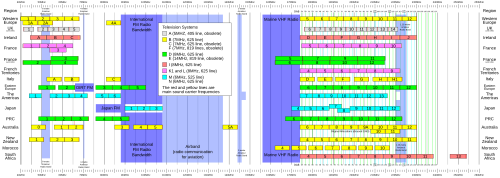
CCIR System L is an analog broadcast television system used in France, Luxembourg, Monaco, and Chausey. [1] [2] [3] It was the last system to use positive video modulation and AM sound. [3]
Contents
Initially adopted in 1963 for second national black and white public channel and officially associated with the SECAM color system (SECAM-L) in 1967, it was discontinued in 2011, when France transitioned to Digital Video Broadcasting.

